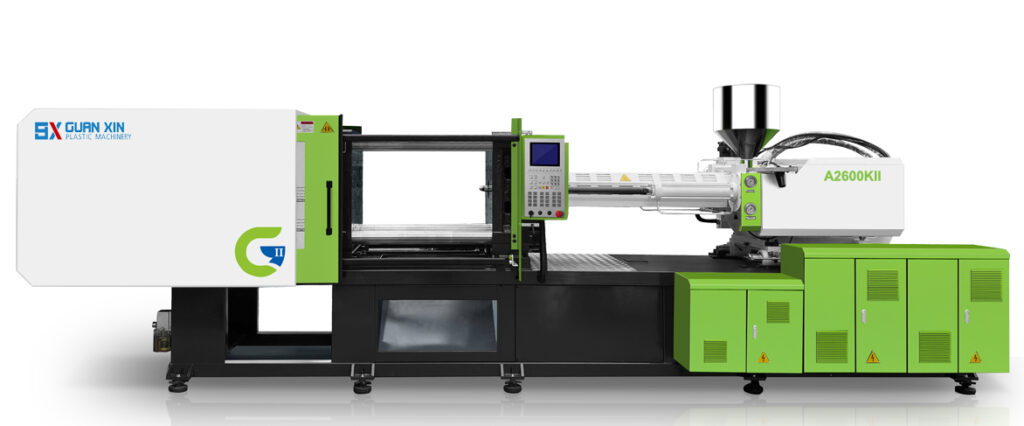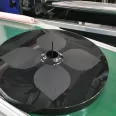Working principle of injection molding machine
With the continuous improvement and expansion of the information technology foundation, the mechanical products in various industries are gradually realizing the operation mode of intelligent production. Especially in the machinery manufacturing industry, the improvement of the performance of the product itself and the perfection of the working principle will make the product itself have more market profit share in the market. In this regard, we will talk about the working principle of injection molding machine.
 The working principle of the injection molding machine is similar to that of the syringe used for injection. It is a process of injecting the plastic that has been plasticized into the closed mold cavity with the thrust of the screw (or plunger) and then getting the product after curing and shaping.
The working principle of the injection molding machine is similar to that of the syringe used for injection. It is a process of injecting the plastic that has been plasticized into the closed mold cavity with the thrust of the screw (or plunger) and then getting the product after curing and shaping.
Injection molding is a cyclic process, each cycle mainly includes: quantitative feeding – melting plasticizing – pressure injection – mold cooling – mold opening and parts taking. After removing the plastic part, the mold is closed again and the next cycle is carried out.
Operation items of injection molding machine: Operation items of injection molding machine include control keyboard operation, electrical control system operation and hydraulic system operation. The selection of injection process action, feeding action, injection pressure, injection speed, ejection type, monitoring of the temperature of each section of the cylinder, adjustment of injection pressure and back pressure, etc.
• Plastic Products Mould Making Machine
The general molding process of screw injection molding machine is: Firstly, granular or powdery plastic is added into the cylinder, and the plastic becomes molten by rotating the screw and heating the outer wall of the cylinder. Then, the machine moves the mold closing and injection seat forward, so that the nozzle is close to the gate of the mold. Then, pressure oil is injected into the injection cylinder, so that the screw is pushed forward, so that the molten material is injected into the closed mold with low temperature at a high pressure and fast speed. After a certain amount of time and pressure holding (also known as pressure holding), cooling, so that it solidifies, the mold can be opened to take out the product (the purpose of pressure holding is to prevent the reverse flow of the molten material in the mold cavity, to replenish the material in the mold cavity, and to ensure that the product has a certain density and dimensional tolerance). The basic requirements of injection molding are plasticizing, injection and molding. Plasticization is the premise to realize and guarantee the quality of the molding products, and in order to meet the molding requirements, the injection must ensure that there is enough pressure and speed. At the same time, due to the high injection pressure, the corresponding high pressure in the mold cavity (the average pressure in the mold cavity is generally between 20 and 45MPa), so there is a large enough mold closing force. It can be seen that the injection device and the mold device are the key parts of the injection molding machine.
The evaluation of plastic products mainly has three aspects, one is the appearance quality, including integrity, color, luster and so on; Second, the accuracy between size and relative position; The third is corresponding to the use of physical properties, chemical properties, electrical properties, etc. These quality requirements are based on the use of products in different occasions, the scale of the requirements are also different. The defects of the products mainly lie in the design, manufacturing accuracy and wear degree of the die. But in fact, the technicians of plastic processing plants often suffer from the difficult situation of using technological means to make up for the problems caused by mold defects and little effect.
![]()
The adjustment of technology in the production process is a necessary way to improve product quality and yield. Because the injection cycle itself is very short, if the process conditions are not good, the waste will flow. When adjusting the process, it is best to change one condition at a time and observe several times. If the pressure, temperature and time are all adjusted together, it is easy to cause confusion and misunderstanding, and the problem does not know what the reason is. There are many measures and means to adjust the process. For example, there are more than ten possible solutions to solve the problem of product dissatisfaction. Only by choosing one or two major solutions to solve the crux of the problem can we really solve the problem. In addition, attention should be paid to the dialectical relationship in the solution. For example: products appear sag, sometimes to improve the material temperature, sometimes to reduce the material temperature; Sometimes you have to increase the amount of material, sometimes you have to reduce the amount of material. Acknowledge the feasibility of reverse measures to solve the problem.
